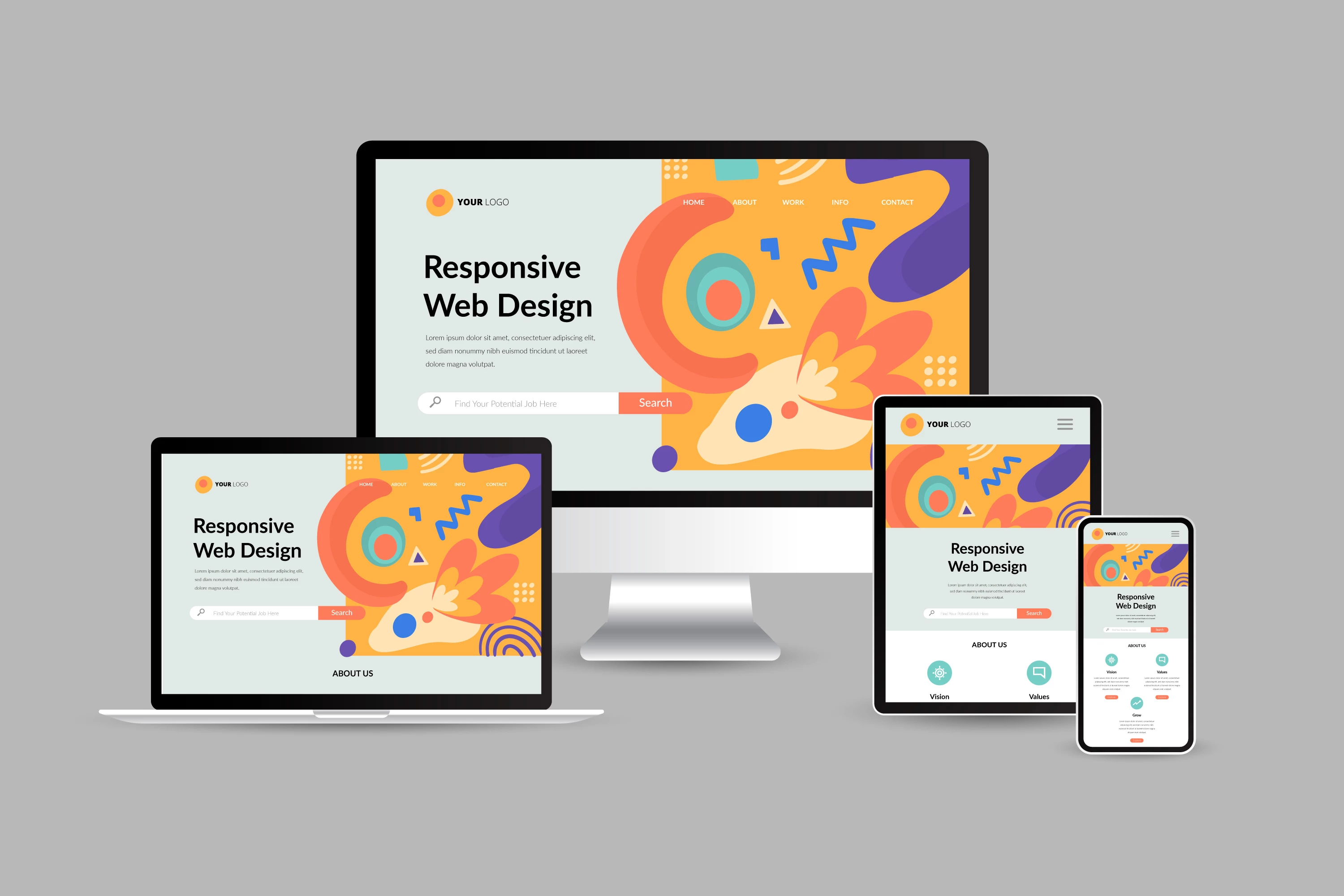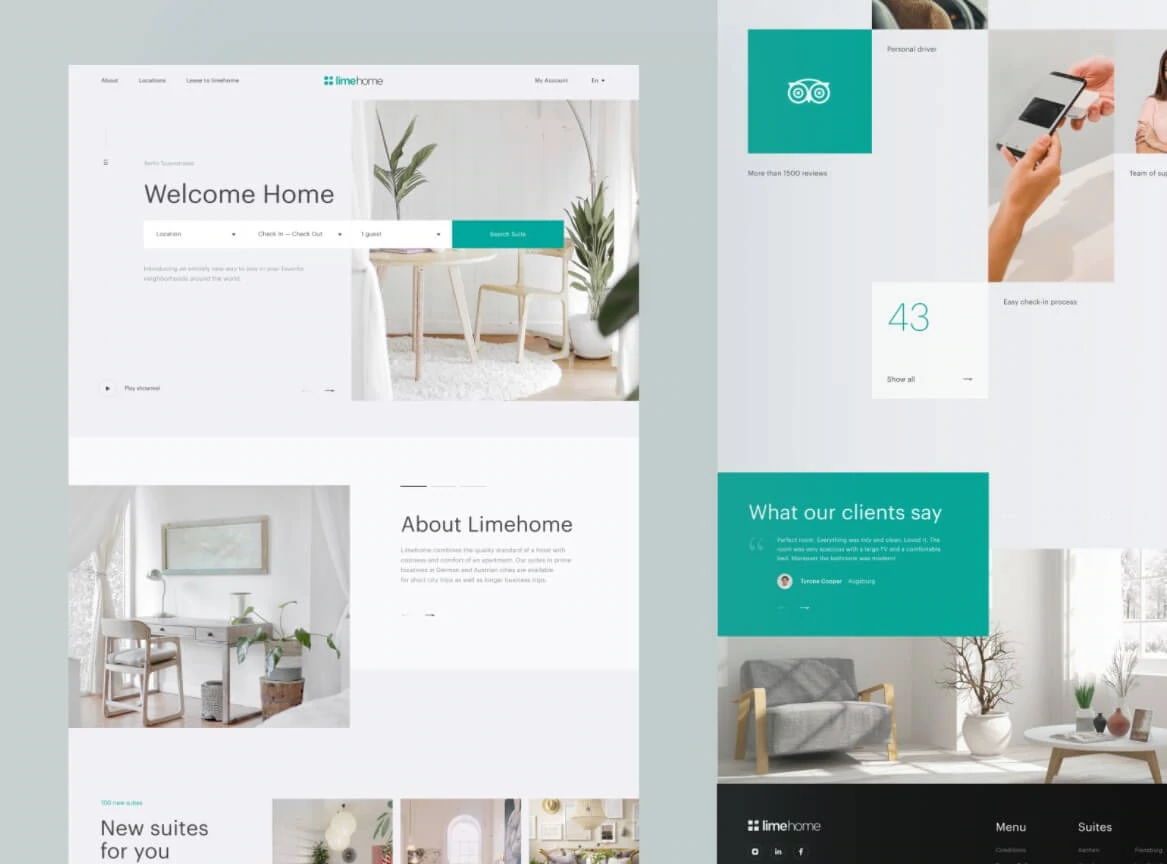The Future of Digital Marketing: Welcoming Modern Website Design Trends
Wiki Article
Understanding the Duty of Responsive Style in Modern Web Site Advancement
In today's digital landscape, receptive style is no much longer a luxury yet a need in site development. The value of receptive design prolongs past individual experience-- it is likewise a critical variable in search engine optimization and access.Significance of Responsive Layout
In today's digital landscape, the significance of responsive style in website growth can not be overemphasized. As consumers progressively depend on a selection of gadgets-- ranging from computer to smartphones and tablet computers-- making certain a smooth individual experience throughout all platforms has come to be crucial. Responsive design permits sites to immediately readjust their format and functionality based on the display dimension and positioning of the tool being used. This versatility boosts individual involvement and complete satisfaction by providing constant accessibility to material without needing hands-on adjustments such as scrolling or zooming.In addition, responsive style is important for seo (SEO) Internet search engine like Google prioritize mobile-friendly web sites in their search results, suggesting that a responsive layout can dramatically affect a website's visibility and ranking. This optimization not only boosts the individual experience but likewise drives natural website traffic and enhances the possibility for conversion and earnings generation.
In addition, responsive style offers services a cost-efficient service by getting rid of the demand for multiple versions of a web site. By enhancing internet advancement processes and lowering maintenance initiatives, companies can assign resources much more effectively, inevitably bring about enhanced return on financial investment. Thus, receptive style is indispensable in today's competitive electronic environment.
Crucial Element of Responsive Style
To efficiently execute receptive style, it is vital to focus on a number of vital elements that make certain optimal functionality and customer experience across diverse tools. One of the basic parts is the adaptable grid layout, which permits designers to produce liquid grids that automatically adapt to various display sizes. This makes certain that material preserves symmetry and readability, despite the gadget being utilized.
Additionally, touch-friendly navigation is essential for responsive design. Implementing quickly tappable buttons and intuitive gesture controls enhances functionality on touchscreen gadgets. Focusing on efficiency optimization is additionally crucial, as it boosts filling times and decreases bounce prices, especially on mobile connect with variable speed.
Last but not least, utilizing a mobile-first approach makes certain that the style is initially optimized for smaller sized displays prior to expanding to suit desktops. This technique ensures that crucial performance and aesthetic appeals are preserved throughout all systems, ultimately improving the total user experience.
Effect On Individual Involvement
Responsive layout substantially affects customer engagement by improving accessibility and complete satisfaction throughout numerous tools. By guaranteeing that an internet site's layout adapts effortlessly to various screen sizes, receptive style allows users to gain access to material find more info effortlessly, whether they are using a tablet computer, desktop, or mobile phone . This versatility lowers the need for unneeded zooming or scrolling, supplying an extra intuitive and positive browsing experience. Consequently, individuals are most likely to stay on my explanation the site longer, check out added web pages, and connect with the content, every one of which are key signs of boosted interaction.In addition, receptive style contributes to faster web page packing times, which is important for keeping user interest. Customers are a lot more inclined to desert a site if it takes too lengthy to tons, specifically on mobile gadgets. By maximizing efficiency for diverse systems, receptive layout decreases packing delays, maintaining individuals involved and minimizing bounce rates.
Search Engine Optimization Perks of Responsive Design
While improving customer experience is a primary goal, receptive layout also plays a vital role in enhancing a web site's search engine optimization (SEARCH ENGINE OPTIMIZATION) Responsive style makes sure that an internet site adapts to various screen sizes, getting rid of the demand for separate mobile and desktop versions.Moreover, responsive style help in faster page packing times, an essential consider SEO. Search engines prefer sites that fill promptly, identifying that customers are more probable to abandon sites that take too long to show. By employing receptive style, developers can optimize photos and simplify web content, making sure effective packing and enhanced online search engine rankings.
Furthermore, a cohesive URL framework across tools simplifies the indexing process for online search engine, boosting crawl efficiency. This uniformity in Links reinforces a web site's authority and integrity, causing enhanced visibility in search results. In recap, receptive layout useful content is not simply a trend but an essential part of search engine optimization technique, guaranteeing websites are both straightforward and internet search engine suitable.
Executing Responsive Layout Techniques
In the world of contemporary internet growth, implementing receptive design approaches is similar to crafting a versatile canvas that adjusts flawlessly to different display dimensions. Central to this method is using adaptable grid-based designs, which use family member systems like percentages instead than fixed devices such as pixels. This guarantees that web content scales suitably throughout devices. One more critical technique involves employing media inquiries, which make it possible for designers to use various styles based on the features of the device, such as size, elevation, and resolution.Responsive pictures and media are likewise crucial elements. By utilizing techniques like CSS media inquiries and the HTML 'photo' aspect, developers can offer suitably sized photos based upon the customer's tool, enhancing tons times and improving individual experience. Furthermore, the consolidation of fluid typography ensures that text is legible and aesthetically pleasing on any display, attained via scalable systems like 'rem' and 'em'.

Final Thought
Responsive style makes up a necessary facet of modern internet site growth, dramatically boosting customer experience throughout an array of gadgets. By integrating versatile designs, scalable images, and touch-friendly navigation, it boosts customer involvement and maximizes site performance. Additionally, responsive layout is crucial for search engine optimization, as it lines up with internet search engine' choice for mobile-friendly sites, thereby raising exposure and natural web traffic. Ultimately, implementing receptive layout methods guarantees improved access and functionality, rendering websites a lot more efficient and user-centric.To successfully apply responsive layout, it is important to concentrate on a number of key aspects that ensure ideal capability and user experience throughout diverse devices.Responsive layout significantly influences customer engagement by improving access and fulfillment throughout different tools. By guaranteeing that a web site's format adapts seamlessly to different display dimensions, responsive design enables individuals to accessibility content easily, whether they are making use of a tablet, mobile phone, or desktop computer .While boosting customer experience is a key objective, receptive style likewise plays a vital duty in enhancing a web site's search engine optimization (SEO)Responsive style makes up a crucial element of modern internet site development, considerably improving user experience across a range of tools.
Report this wiki page